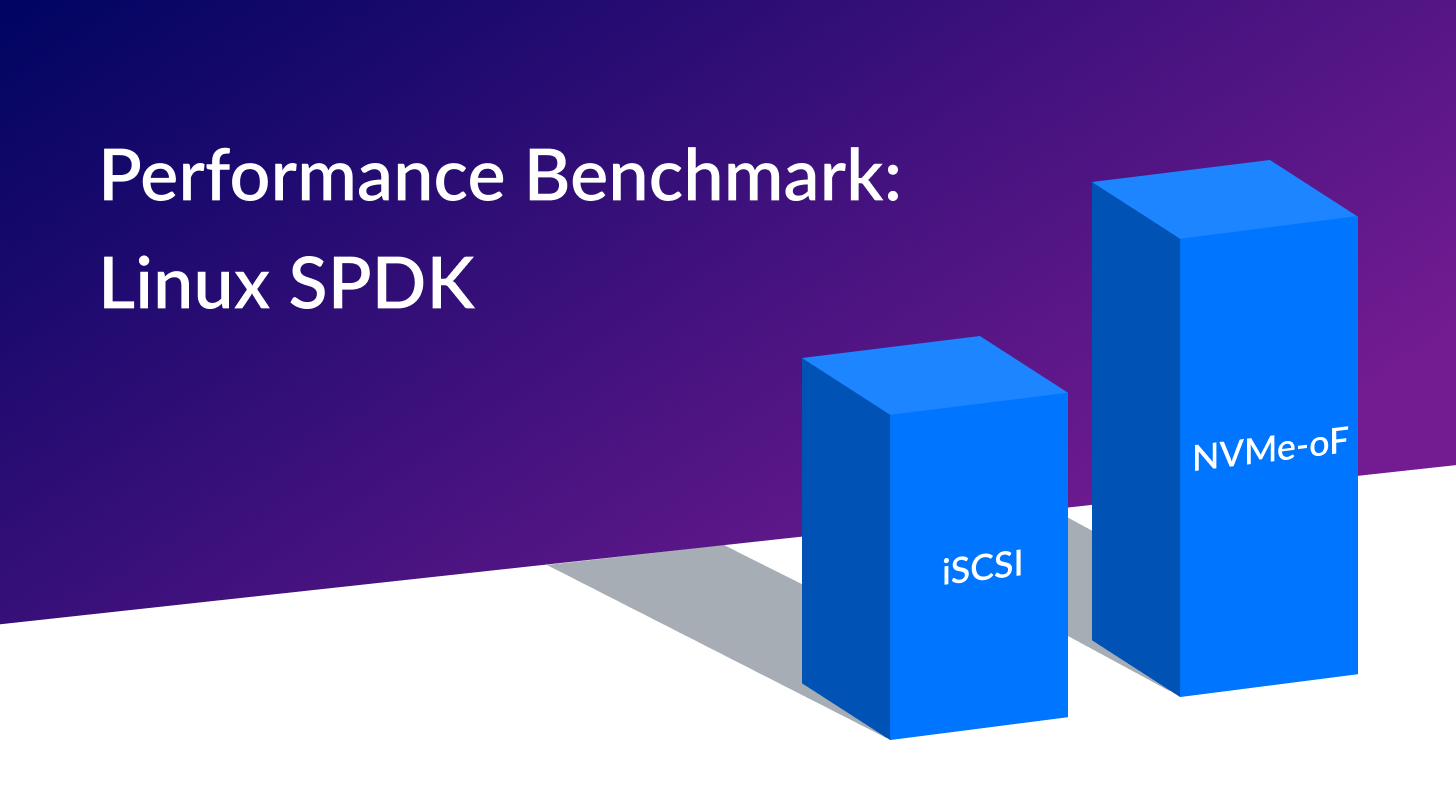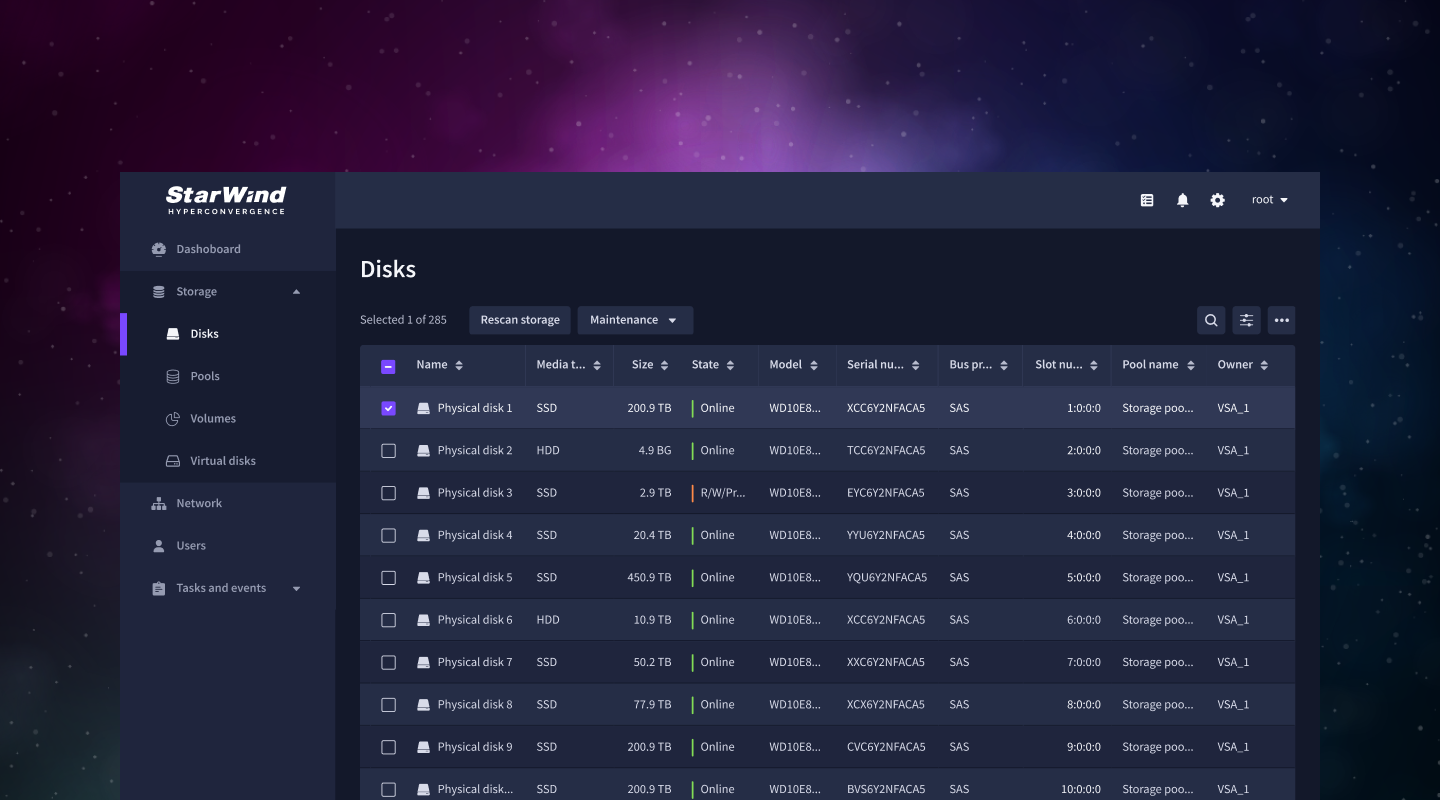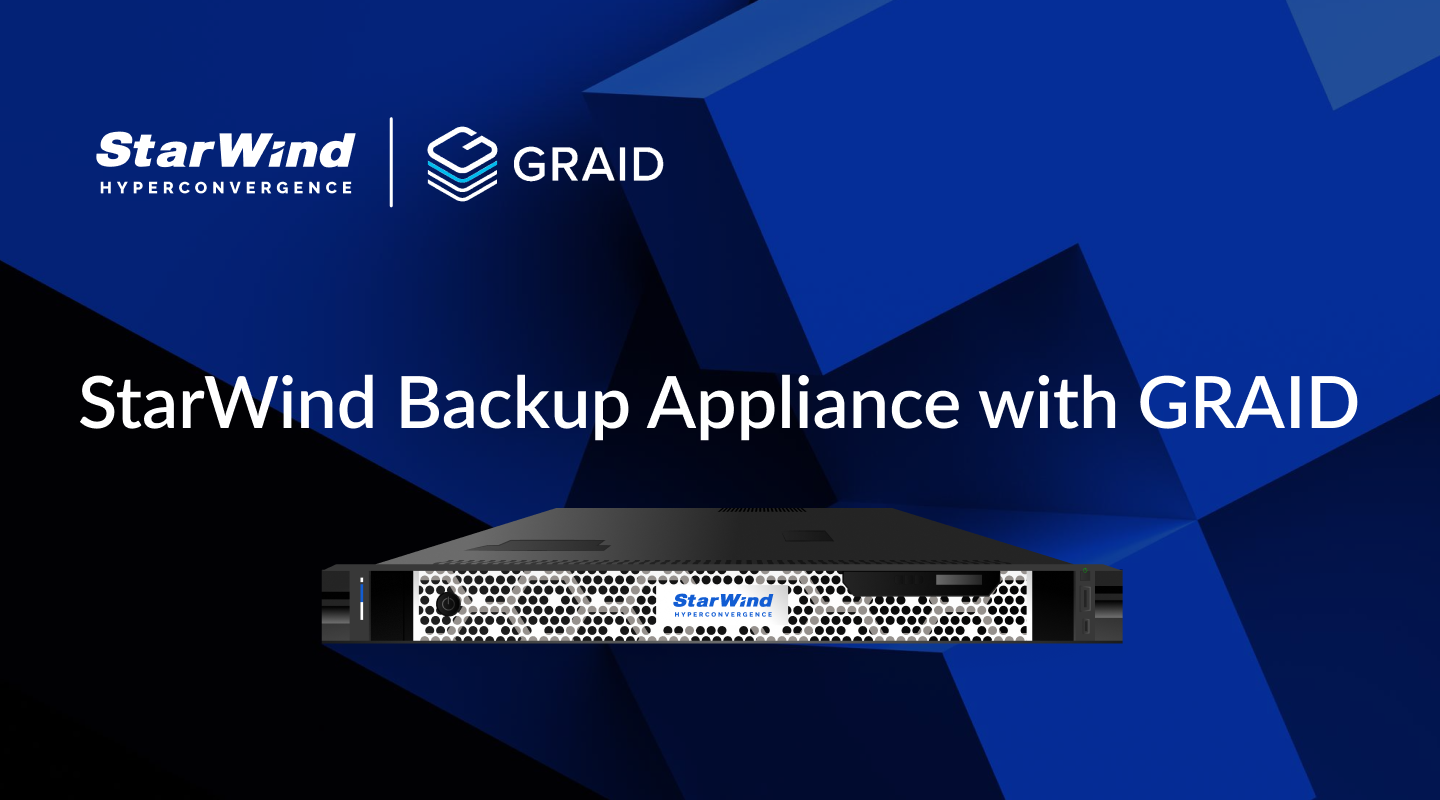Comparing HCI Storage Performance: DRBD/LINSTOR vs Ceph vs StarWind VSAN. Dive into a detailed performance comparison of DRBD/LINSTOR, Ceph, and StarWind VSAN on Proxmox VE.

Comparing HCI Storage Performance: DRBD/LINSTOR vs Ceph vs StarWind VSAN. Dive into a detailed performance comparison of DRBD/LINSTOR, Ceph, and StarWind VSAN on Proxmox VE.

Discover our latest SPDK iSCSI vs. NVMe over Fabrics (NVMe-oF) performance benchmarks, and understand which protocol excels in speed and efficiency for your specific use cases.

Previously, we compared the performance of NVMe-oF Initiators for Linux and Windows. Time to try that again with an updated StarWind NVMe-oF Initiator for Windows.

The new build of StarWind SAN & NAS is already here! Installed on top of a dedicated storage node full of NVMe drives, it now can be accessed over FC (Fibre Channel). The best way to see how fast it can go is to test its performance using two different RAID5 arrays, such as MDRAID and GRAID.

With NVMe SSDs quickly erupting as the desired storage standard, common RAID technology isn’t able to provide any longer. StarWind, being ahead of IT infrastructure trends, has already solved this bottleneck. Empowered with GRAID SupremeRAID™, the world’s first NVMe-oF RAID card, and StarWind SAN&NAS SDS, StarWind Backup Appliance unleashes the entire potential of NVMe for both backup performance and backup data security.

NVMe is the latest storage novelty that leaves legacy stuff behind. We’ve already proved that both Linux open source and StarWind NVMe-oF Initiator for Windows can deliver 100% of the back-end NVMe performance to the consumer when run over RDMA networks. Time to see how fast they will work over TCP.

The NVMe-oF is the hottest network storage trend so far. Up to now Microsoft Windows users had no access this tech due to lack of the NVMe-oF initiator for Windows. StarWind brough NVMe-oF to Widnows! Let’s see how NVMe-oF plays with Microsoft SQL Server AGs (Availability Groups) on Windows Server in the real life scenario.

NVMe-oF is the modern appropriate protocol for getting the most out of NVMe drives, the fastest storage medium to date. Linux users have long been enjoying NVMe-oF, but Microsoft users have been left out. Now, StarWind has brought the power of NVMe-oF to Windows users by means of a lightweight 100% software solution.
